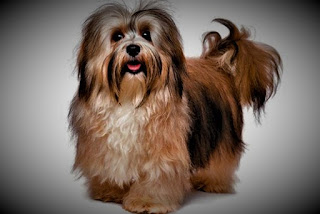Havanese Dog
history
The breed of Havanese dogs has a very long history because
their ancestors are mentioned in the works of Aristotle. Although, in fact,
here, as always, opinions diverge. Some believe that Havanese comes from Malta,
it is he, or rather - his ancestors, others believe that the breed occurred
with Tenerife.
Subsequently, this breed from the family of bichon got to
Cuba together with the colonists, which was a great success. More
precisely, the breed was a success among noble ladies, who valued them for their
appearance and character. For a long time, the Havana bichon lived in Cuba,
first with nobles, then - mainly among wealthy Europeans and Cubans.
When the revolution took place in Cuba in modern times, many
Americans and Europeans, like the rich indigenous people of this island, fled
to America, of course, taking with them their little pets. However, in America,
no one was engaged in breeding and crossing these dogs, there were no breeders,
there were no kennels, and the breed began to slowly, but surely, die out.
Only in 1970, there were enthusiasts who wanted to breed Havanese
bichon, but by this time only 11 individuals survived. Havanese received
official recognition in 1996. Since then, a lot has changed over the past 25
years and the breed has significantly increased its numbers, emerging from the
risk group, and ranked 25th in popularity in the U.S. in 2013.
Characteristics
of the breed
popularity 01/10
training 10/10
size 02/10
mind 10/10
protection 07/10
Relationships with
children 10/10
Dexterity 07/10
Breed information
|
country |
Cuba |
|
lifetime |
12-16 years old |
|
height |
Males: 23-29 |
|
weight |
Males: 2-5 |
|
Longwool |
Average |
|
Color |
black, white, brown, yellowish-brown |
description
These are small dogs, of a normal physique. The limbs are
proportional, slightly shorter than the average in relation to the body, and the
tail is short. The muzzle is a little flattened, and the ears are folded. The hair
is long.
personality
Havana bichon is a breed with a very nice and open
character. These pets are extremely attached to their family and owner and are
distinguished by great devotion and kindness. Their friendliness is endless. In
fact, for centuries they have not performed any other functions, except to be a
wonderful companion, a faithful, good friend who will be with you in grief and
joy.
This breed easily goes into contact, and with strangers, as
a rule, no problems or rejection arise. Often, the Havana bichon chooses one
of the family members as the main owner and tries to spend all his time with
this person. nay. There is even a problem that manifests itself quite often,
called lyceum.
That is, it is the state of mind of your pet, when he
literally follows on the heels of his master, sleeps with him, sits on his lap
next to him when he eats, and is near literally every minute. Accordingly, the
moments of separation of the animal is not going very well, and when he sees the owner again, there is no limit to the joy.
The energy level of the breed, on the one hand, is above
average, on the other hand, it does not require special physical activity, long
walks, or other things. Although, if you decide to walk longer than usual, the
dog of course will be happy. She will have enough and two 20 minute walks in
the yard a day, as well as a number of games time at home. Children are well
received, with other pets getting along normally, but it is better to be friends with them at an early age.
Common diseases
Havana Bichon may suffer from the following diseases:
- dislocated kneecap;
- Liver disease;
- Heart problems;
- retinal dysplasia;
- cataract.



.jpg)
.jpg)
.jpg)
0 Comments